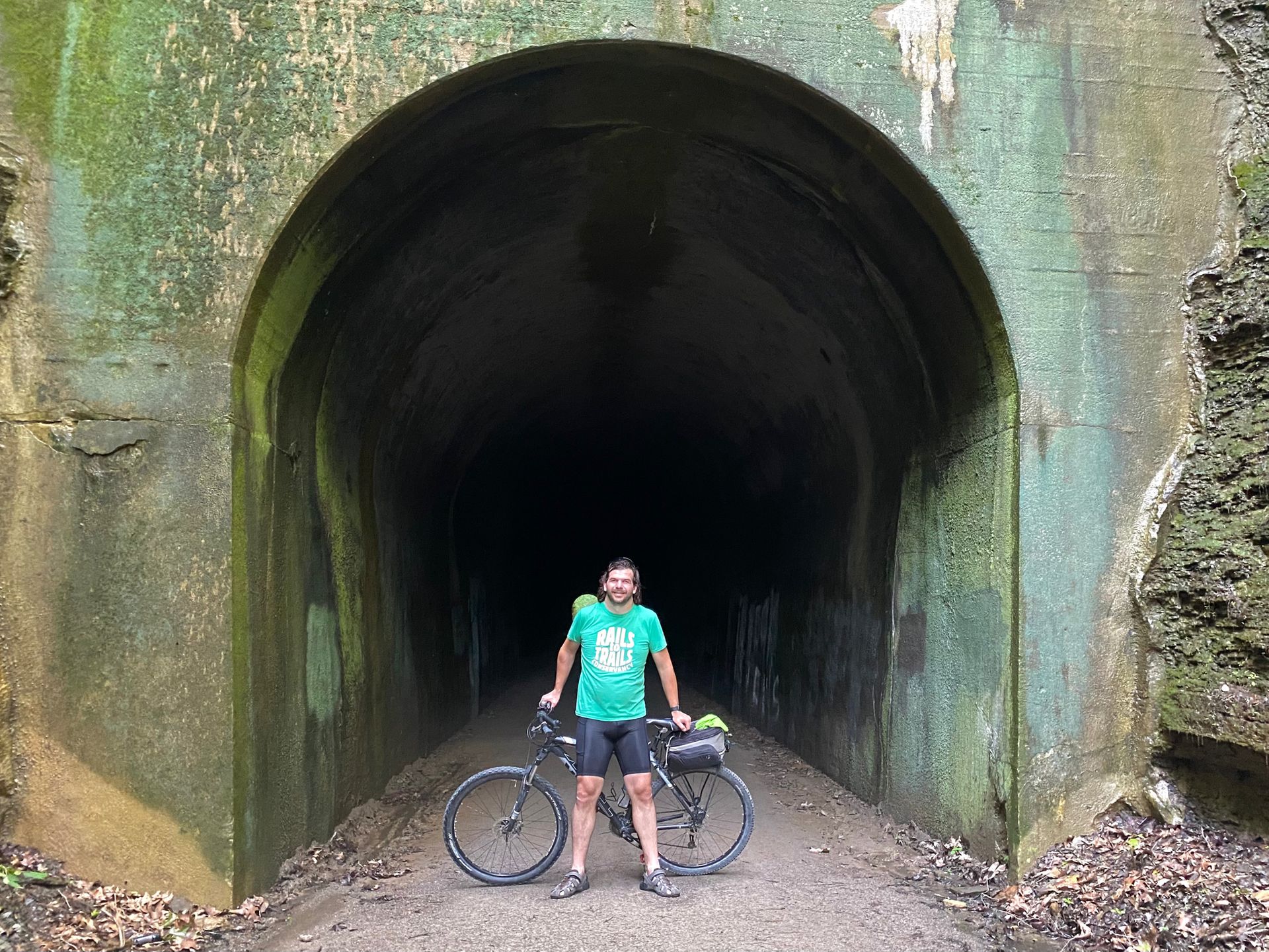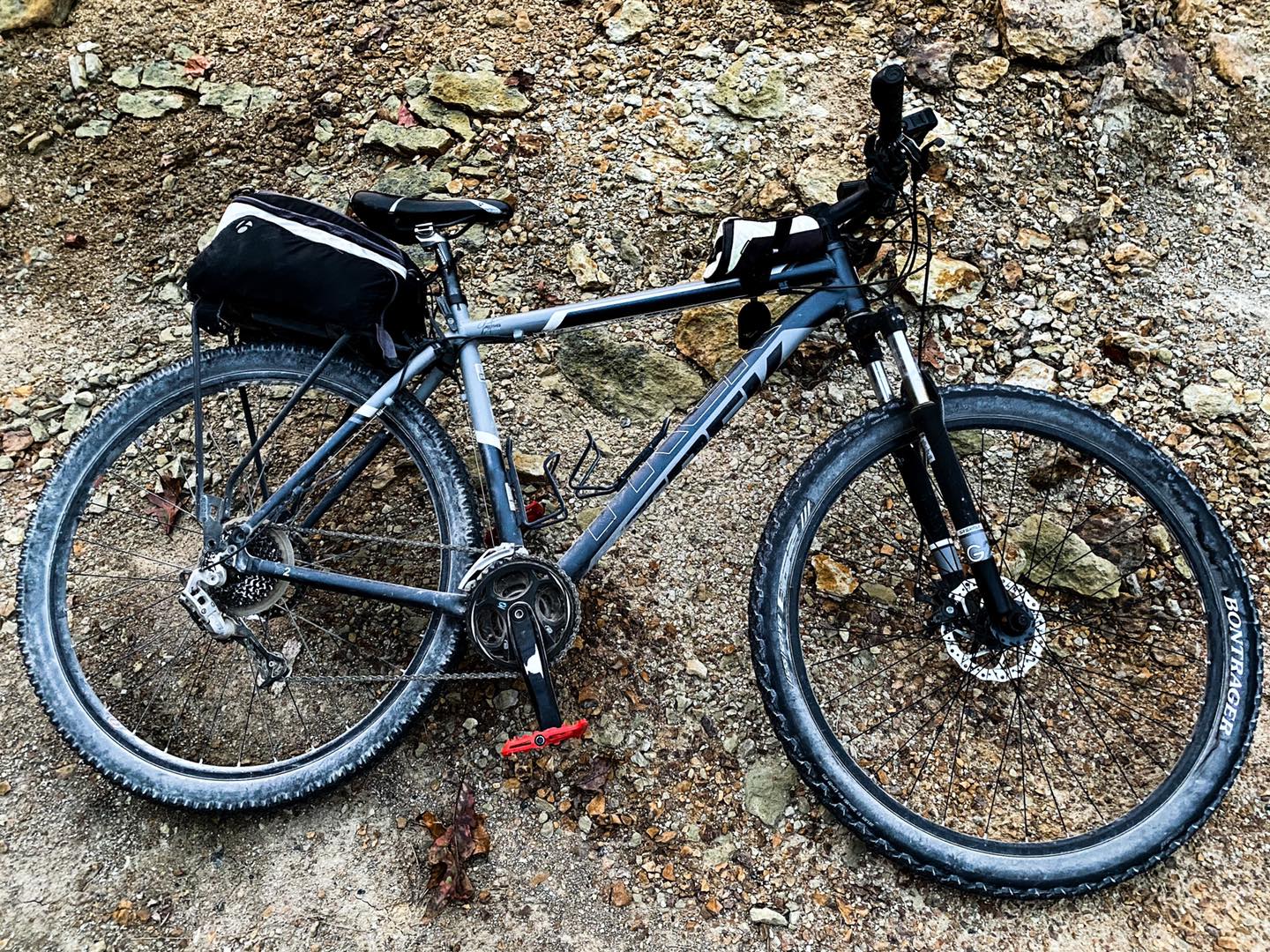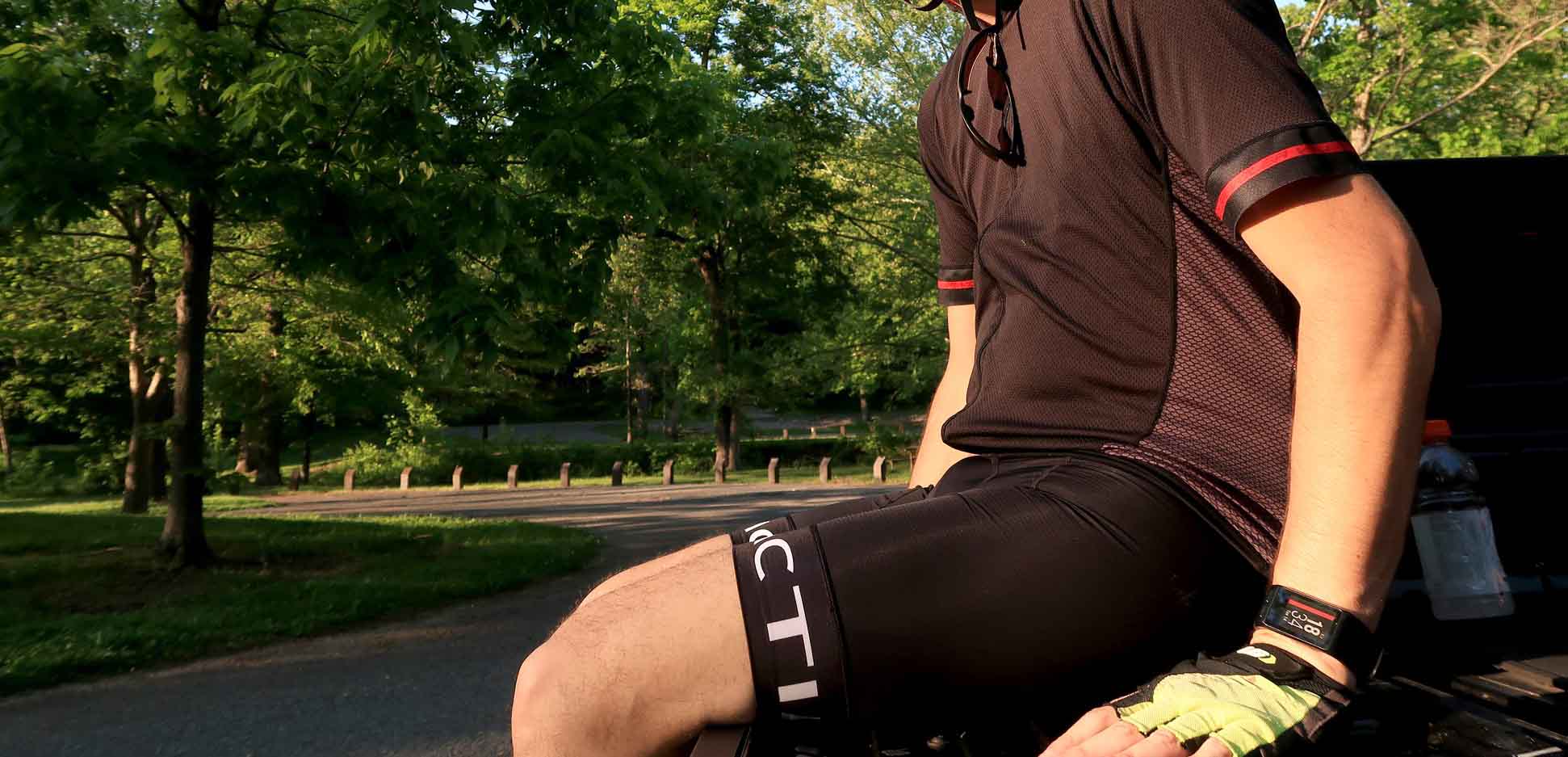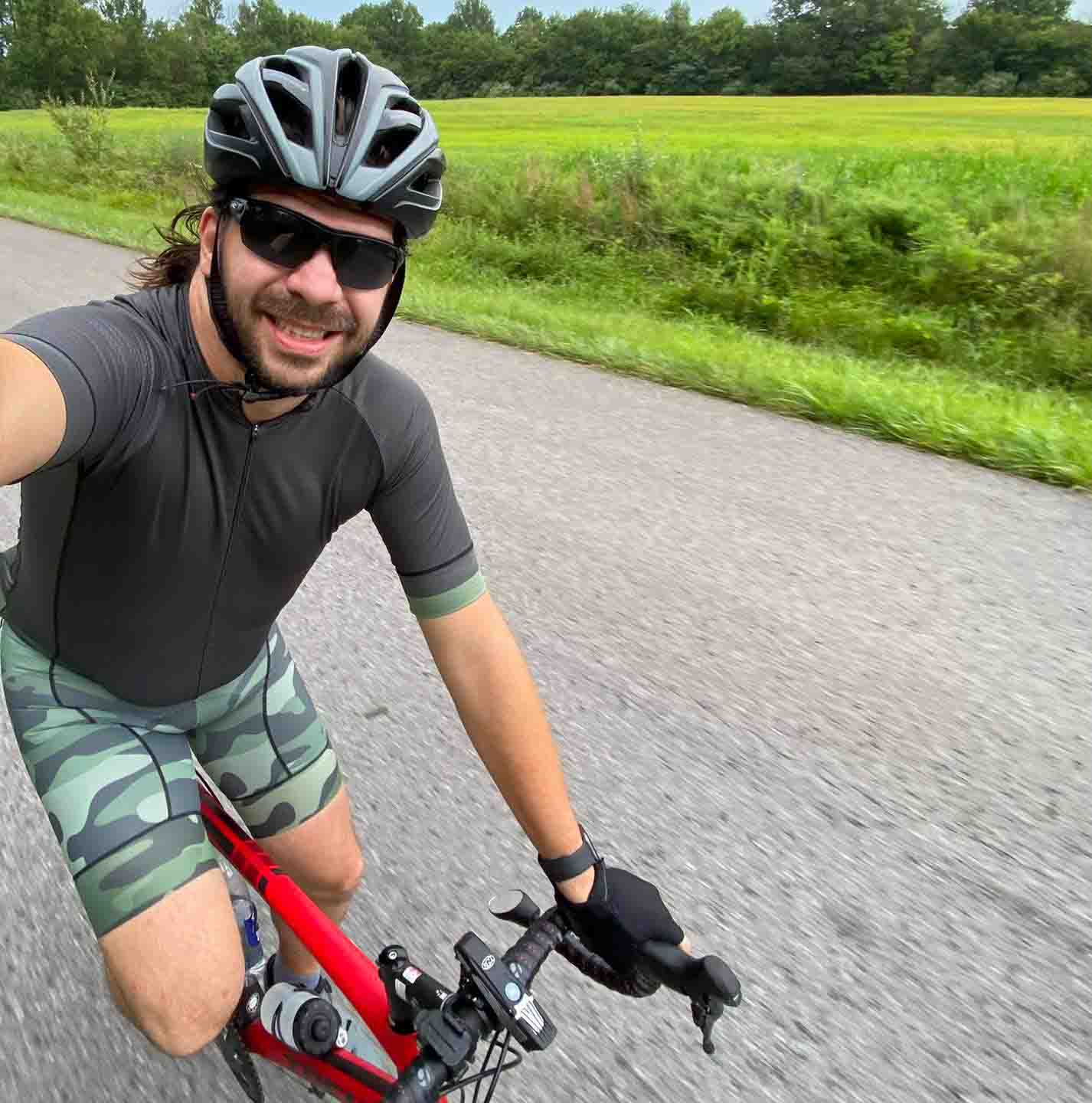Bikepacking Gear Checklist
It’s good to have a bikepacking gear checklist on hand.
The last thing you want to do is get all the way to your campsite and realize you’ve forgotten some vital pieces of gear.
A checklist like the one below can help you ensure that you’ve packed everything you need to have a successful bikepacking trip.
You may not need to take all of the gear mentioned below, but you should at least have good access to an overall bikepacking gear checklist to decide what items are absolutely necessary.
Bikepacking Gear Checklist: Bags
Bikepacking bags are typically different from bike touring bags. This is because bikepacking conditions are usually more rugged and demanding. The following bags will help you pack the items on this bikepacking gear checklist.
Seat Pack
A seat pack looks like an oversized saddle bag.
They’re typically 5 to 14 liters in capacity size.
You want to get one that can securely attach to your bike with little “tail wagging,” and you want to make sure it’s waterproof.
Your seat pack is a great place to store camping, kitchen, and food items.
Top Tube Pack
This pack goes on top of your top tube or bike frame bar.
They’re typically small, with about the same capacity as a normal saddle bag found on road bikes.
It’s a good bag to store bike tools, spare tubes, CO2 cartridges, and maybe a few snacks to quickly get to while riding.
Frame Pack
The frame pack comes in many different shapes and sizes.
My frame pack just covers a quarter of my frame space closer to the top.
You can get them that cover the whole frame if you need more carrying capacity.
Frame packs are good for all your necessities, first aid stuff, and smaller items.
Handlebar Pack
A handlebar pack may be a bag or even a rolled-up piece of fabric that turns into a bag when secured by bungee cords or straps.
This pack comes in many different styles and gear capacity limits.
It’s a great place to store clothes and items like that.
Fork Packs
For packs typically attach to each fork using mounted holders.
You don’t want these packs to be too big especially if riding on narrow single-track routes.
You can put a lot of extra gear in them that you have no other room for.
Backpack
These are packs worn on your body.
Be careful when using these packs. They put more weight on your saddle, which can cause pain and discomfort during longer and more rugged rides.
I wouldn’t recommend anything more than a small hydration pack to carry a water bladder and snacks in.
Bikepacking Gear Checklist: Camping
This part of the bikepacking gear checklist covers the items you’d take with you for camping. Sleeping outside deserves comfort.
Tent, Hammock, or Bivy
You need a shelter to sleep in.
This may be a tent, hammock, bivy, or even a tarp.
Each has different benefits as far as weight and comfort go.
Choose the system that is best for you in the conditions you’ll be camping in.
Sleeping Bag
Bring a sleeping bag to keep yourself warm, especially on cooler nights
There are many different types of sleeping bags,
You can get a standard mummy bag or even a lighter-weight camping quilt.
Sleeping Pad
In most cases, you’ll want a comfortable sleeping pad.
You might be able to resist bringing one if you’re in a hammock, though.
The light the pad, the easier it will be to haul around on your bike.
Pillow
A pillow is pretty optional.
I have to sleep with a pillow in a tent, but I don’t need one in my hammock.
I use a small pillow you have to blow up, so it packs very easily.
Bikepacking Gear Checklist: Food
The next part of the bikepacking gear checklist includes food, hydration, and cooking items. You must stay fueled and hydrated while bikepacking.
Stove
You need a good stove when out bikepacking.
A pocket rocket-styled stove with a small gas canister should be all you need.
You definitely want a good big meal rather than a bunch of snacks.
Cooking Cup
A single cup for cooking should be all you need.
You can eat from it, clean it out, and drink from it, too.
I’ll cook my food, eat from the cup I cooked in, and then clean the cup out for my instant coffee.
Spork
A simple plastic spork really comes in handy.
They’re stronger than plasticware and useful.
Eat with it, stir with it, and it’s so light, you won’t notice it.
Waterproof Matches
Even if you cook with a stove that lights itself, waterproof matches are a good alternative.
Some stove lighting systems go out.
You might actually need to make a fire, too.
Camping Food
Bring some real food with you for camping.
Freeze-dried meals are some of the best types to bring.
Bring some seasoning to help boost the taste.
Snacks
You should also be bringing snacks with you on your bikepacking trip.
You need to keep yourself fueled during your ride.
Good snack options include gels, chews, bars, cookies, and crackers.
Hydration
Staying hydrated is required to stay alive and well while bikepacking.
This is the most important item on your bikepacking gear checklist.
Bring more water than you’ll need, and bring some electrolytes with you, too.
Water Filter
Buy a simple water filter for hiking and camping.
Learn how to use it and make sure it works.
Take it with you just in case you run out of water.
Bikepacking Gear Checklist: Bike Stuff
Make sure your bikepacking gear checklist also includes important bike stuff that you need to take with you. You’re still riding a bike, after all, and any sort of breakdown could occur at any moment of your ride.
Your Bike
Make sure you’re using the right bike for the right terrain.
You might need a gravel bike or a full-suspension mountain bike.
Make sure the bike is up to date on maintenance and ready for an adventure.
Extra Tube
Bring at least one tube with you and some tire levers.
Even if you are tubeless.
Something can happen, and you need a tube.
Patch Kit
Bring a patch kit for the minor issues that might arise from bikepacking.
A few patches, sandpaper strips, and some glue are all you need.
They’re handy to have, just in case.
Chainbreaker with Extra Links
Bring a chain breaker in case you need to do emergency chain repair.
Bring a few extra chain links in case you need to add them.
Bring a small bottle of chain lube, too.
Air Pump
Make sure you have an air pump with you.
You can get a portable hand pump that works great.
Or go compact with CO2 air pump systems.
Multitool
Get a multitool that fits your bike.
This will allow you to loosen and tighten up your bike in a pinch.
Some even come with chain breaker tools on them.
Duct Tape and Zip Ties
Take some duct tape with you.
Bring a few longer zip ties.
This comes in handy for bigger malfunctions.
Bikepacking Gear Checklist: Clothing
You’ll want to pack some extra clothes if you’re bikepacking for a few nights. Extra clothing is an important item for your bikepacking gear checklist.
Extra Kit
Bring an extra cycling kit with you.
There is nothing worse than sitting on the same pad in your bike shorts for multiple days.
You’ll thank yourself for being able to squeeze into a clean kit the next day.
Camp Clothes
Bring some camp clothes with you to wear off the bike.
To be comfortable at camp, you need only a pair of unpadded biker shorts/compression shorts, or basketball shorts, or leggings, a T-shirt, and a hoodie.
It doesn’t add too much weight to bring a few camp clothing items.
Camp Shoes
Bring a simple pair of sandals, crocs, or something like that for camp.
These types of shoes are lightweight and easy to pack.
Let your feet air out at camp without having to walk on the dirt.
Layers
Bring some extra layers in case you need to warm up a little bit.
Arm and leg warmers make for great extra layers.
Extra layers are better than being cold because you want to save weight.
Rain Gear
Bring some rain gear with you, just in case.
A rain jacket is lightweight and easy to pack.
A pair of rain pants can also come in handy.
Bikepacking Gear Checklist: Extras
This part of the bikepacking gear checklist includes the rest of the stuff that does not fit the categories above. There are some important things on this list to take, though.
TP and Personal Hygiene
Make sure you pack a roll of toilet paper.
Bring personal hygiene items, too.
Just remember to Leave No Trace.
Helmet
Take a bike helmet with you.
Wear your helmet.
Practice safe bikepacking.
Bike Lock
Bring a bike lock with you in case you need to go into civilization.
You might also want to lock your bike up at camp.
It’s better to be safe than sorry when it comes to bike security.
Navigation
Bring any navigation gear that you might need for your trip.
This can include electronic items or offline map apps for your phone.
You might also consider a paper map and compass if you know how to use one.
First Aid Kit
Every bikepacker should bring a first aid kit with them.
If you get in a wreck and get an open wound, it’s important to be able to clean it.
You don’t have to take anything big; just a simple personal kit will do.
Bug Protection
Bring some bug protection with you.
A can of bug spray can go a long way.
A bug net might help out a lot, too, at camp.
Sun Protection
Bring some basic sun protection.
Wear a pair of sunglasses while riding in areas where the sun is hitting your face.
Put on sunblock before you ride each day.
Bear Protection
If you’re in bear country, make sure to pack for it.
Bring some bear spray in case you need to thwart off any content with bears.
Take a bear box with you to hang up your food away from camp.
Charging Gear
You don’t want your phone or other electronics to die during your adventure.
Bring a charging brick so you can charge things up as needed.
Make sure you bring the right charging cords, too.
ID and Money
Make sure you bring your identification and some money.
If something happens to you, identification will be very important.
If you need to stop and buy something, cash is always nice to have.
Camera
Bring a camera with you.
You can use your phone if that’s all you got.
But take photos and videos, and record your experiences so others can see how much fun bikepacking is.
Large Ziploc Bag
These a great for packing out trash.
Remember to Leave No Trace.
Leave the area better than you found it.
Bikepacking Gear Checklist Conclusion
This concludes the bikepacking gear checklist. The items above are a great starting point for ensuring you have everything you need for a great bikepacking adventure.
If you’ve found this article to be helpful, please share it with other cyclists you know. You can also leave me a one-time tip for publishing it, but only if you want to.
Be sure to subscribe to my upcoming free cycling newsletter for more tips and resources sent right to your inbox.
About Shawn Gossman
Shawn Gossman is the author of this post and founder of the Beginner Cycling Tips Blog.
Shawn has been an avid cyclist for around 12 years. He road, gravel, mountain, and trail bikes. He likes adventuring more than racing.




